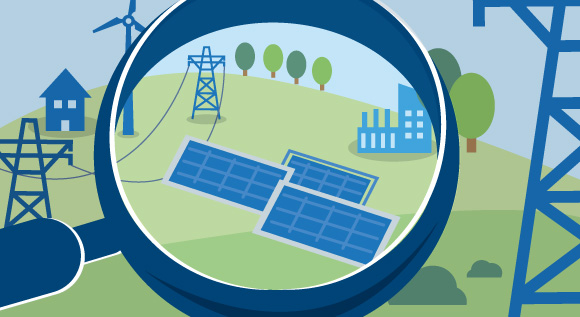What is the Climate-neutral electricity system platform?
Our future electricity system will be renewable, flexible and interacting. For this to take shape, a lot of difficult questions have to be clarified and a number of bright minds need to work together effectively and well. This is now being facilitated via a joint platform.
 © Federal Ministry for Economic Affairs and Climate Action (BMWK)
© Federal Ministry for Economic Affairs and Climate Action (BMWK)
The aim is for our electricity system to be largely climate neutral by 2035. Achieving this also requires the continued development of measures and regulatory framework for the electricity markets.
By 2030, the share of renewable energy in electricity generation is to amount to at least 80%; in 2035, our electricity system could be largely climate neutral. A new, flexible and interacting electricity system is needed to decarbonise the electricity sector, along with all other sectors – with the help of green electricity.
Answers with vision sought for difficult questions
But what exactly makes up an electricity market for a climate-neutral electricity system? How can a market incentivise investments in controllable capacities in the long term in order to continue to ensure that the security of supply remains high?
The Climate-neutral electricity system platform is to work out solutions to these and other questions and develop options for action.
Four working groups for a climate-neutral electricity system
The Funding Renewables WG deals with the question of how incentives needed for renewable energy installations in a climate-neutral electricity system, i.e. for expansion that is sufficient and operation that serves the system, can be maintained . The Flexibility Options WG examines what framework is needed to make sure the electricity demand and supply are increasingly aligned. The Funding of Controllable Capacities WG is examining how incentives to invest in controllable capacities can be safeguarded.
The Regional Signals WG deals with regional and local price signals. In the new electricity system, renewable energy needs to be transported across long distances and integrated into the transmission and distribution grid. At the same time, discussions must be held on whether and how, in an electricity system that is based largely on renewable energy sources, there have to be regional price signals that support better regional load management and represent the grid better on the market.

